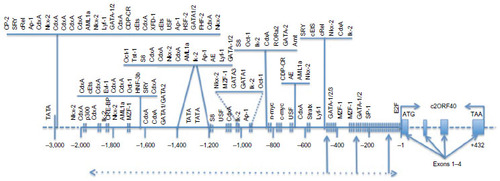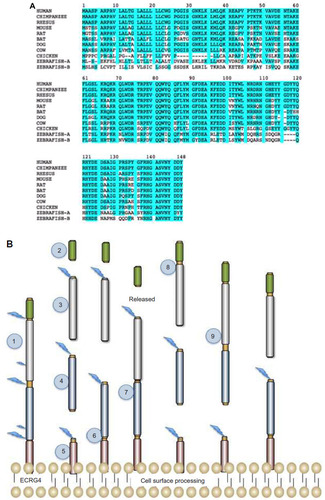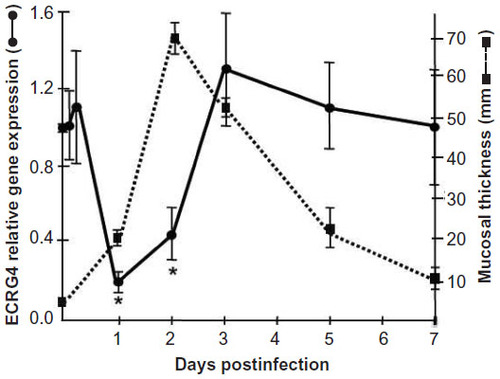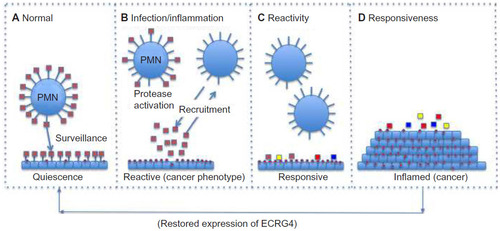Notes: In quiescent tissues (
A), ECRG4 is present on the cell surface of both epithelial cells
Citation35,Citation38–Citation40 and circulating leukocytes.
Citation37 This cell surface ECRG4 is thought to play a “sentinel” function that monitors homeostasis, gauges the proinflammatory response to injury and infection,
Citation35,Citation39,Citation40 and thereby maintains quiescence. Upon infection or inflammation (
B), protease activation and priming of these cells release processed forms of ECRG4 from the cell surface
Citation37,Citation44,Citation45 and ECRG4 gene expression is downregulated,
Citation35,Citation39,Citation40 taking a cancer genotype.
Citation4–Citation6,Citation11–Citation14,Citation16–Citation22,Citation52,Citation53,Citation55,Citation63 The release of smaller processed ECRG4 peptides have intrinsic activities that recruit, inhibit, and activate both inflammatory and epithelial cells.
Citation37,Citation44 The now reactive epithelial cells (
C) are characterized by downregulated ECRG4 gene expression and a loss of ECRG4 on the cell surface, enabling responsiveness to autocrine, paracrine, and endocrine growth promoting factors (
D) that result in cell expansion through increased migration, proliferation, and lost differentiation. A gauged return of the intact ECRG4 to the cell surface in a protease-free (or neutralized) milieu, which is dependent on the methylation of the ECRG4 promoter, inhibits reactivity and helps restore quiescence. In cancer, a continuous downregulation of ECRG4 through hypermethylation and the failure to restore ECRG4 to the cell surface compromises normal immune cell surveillance (
A), and displays a continuous inflammation phenotype (
B) that enables constitutive reactivity (
C) and responsiveness of the cell to mediators of inflammation. The hypermethylation of ECRG4 prevents its ultimate return to the cell surface, thereby interfering with normal immunosurveillance.
Abbreviations: ECRG4, esophageal cancer-related gene 4; PMN, polymorphonuclear cells.




